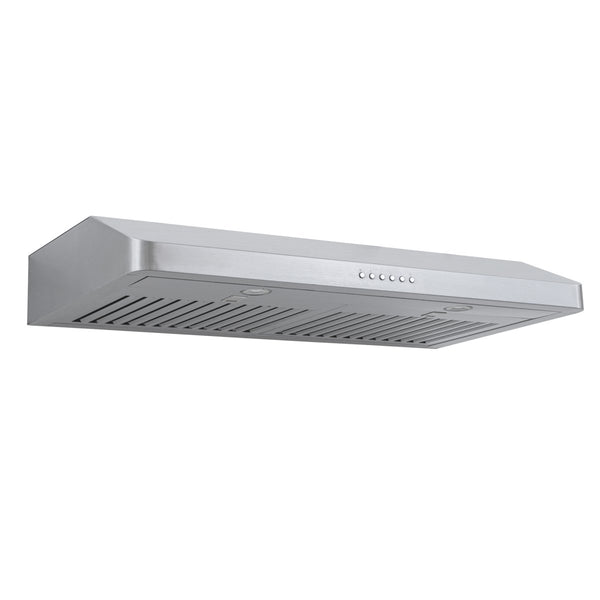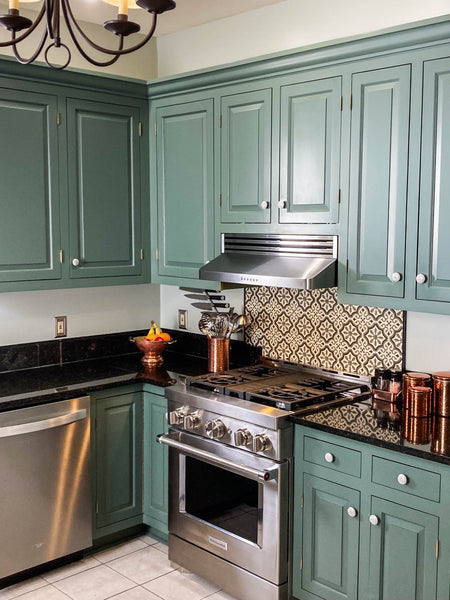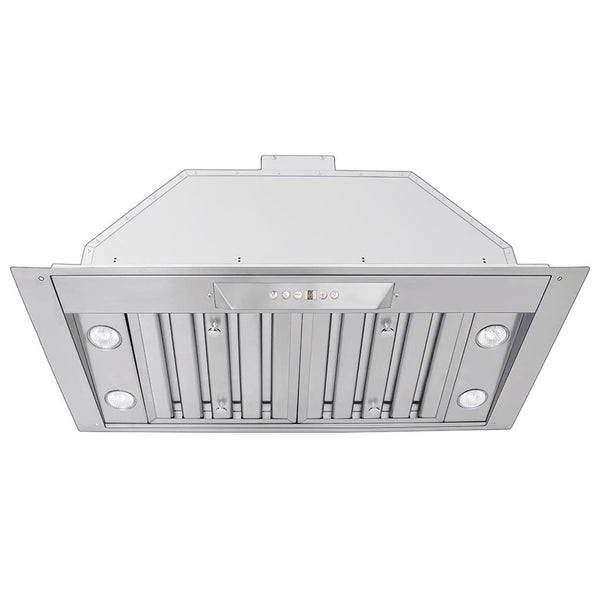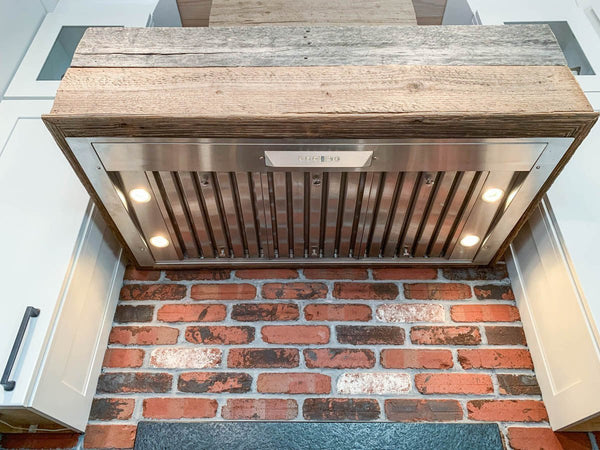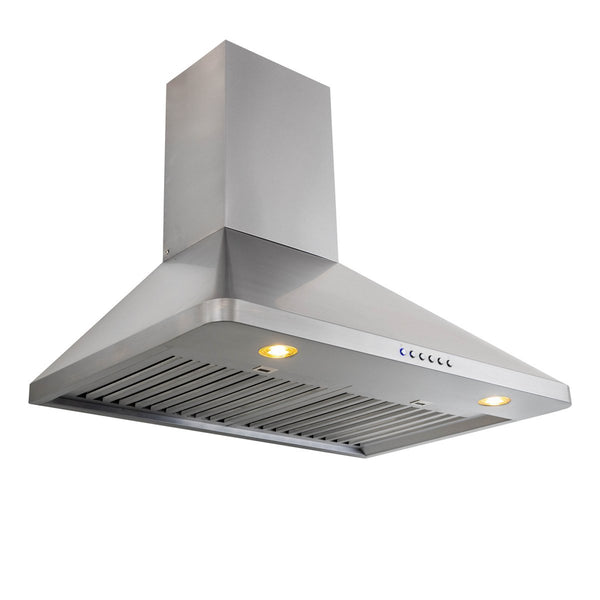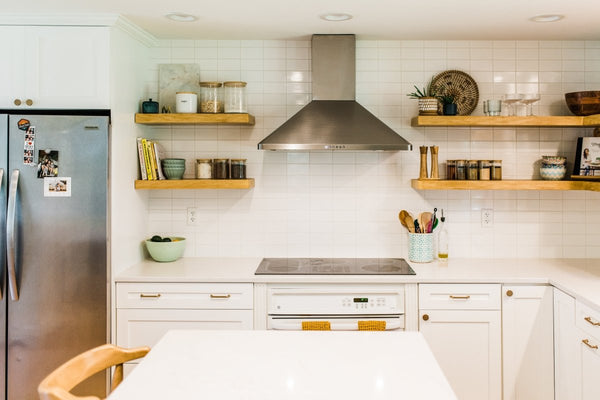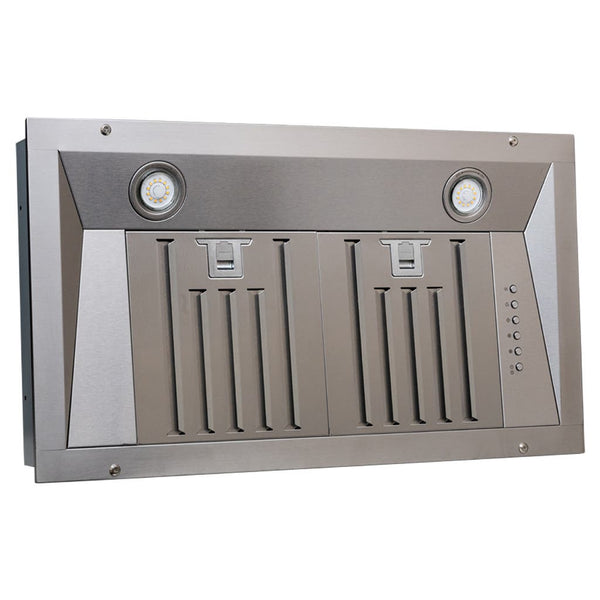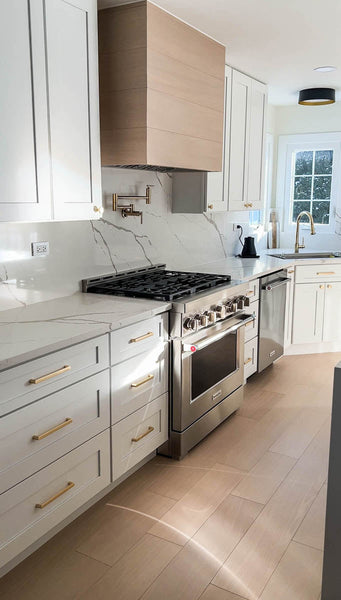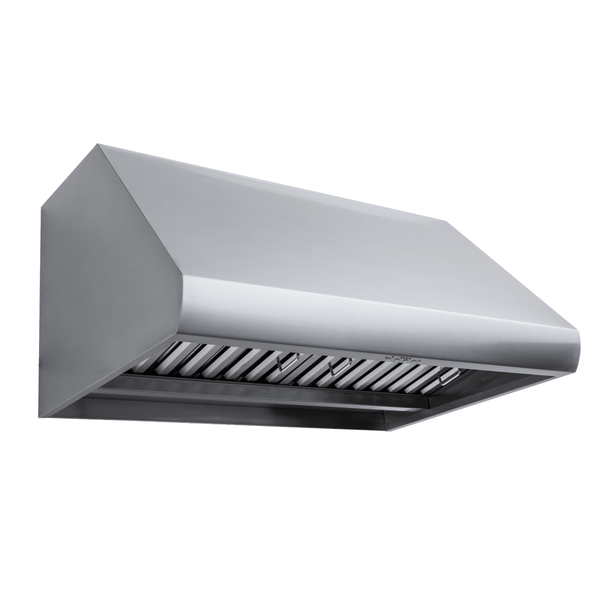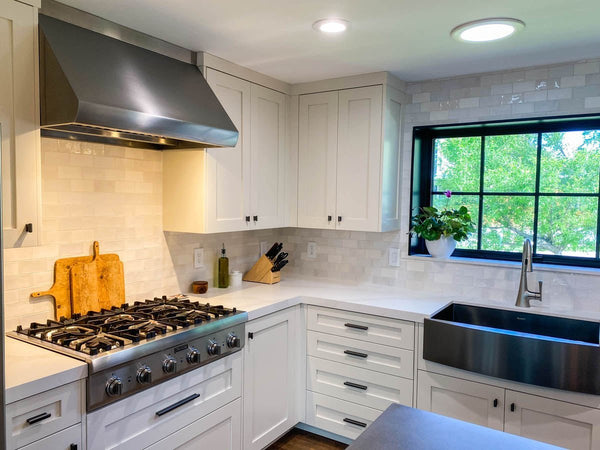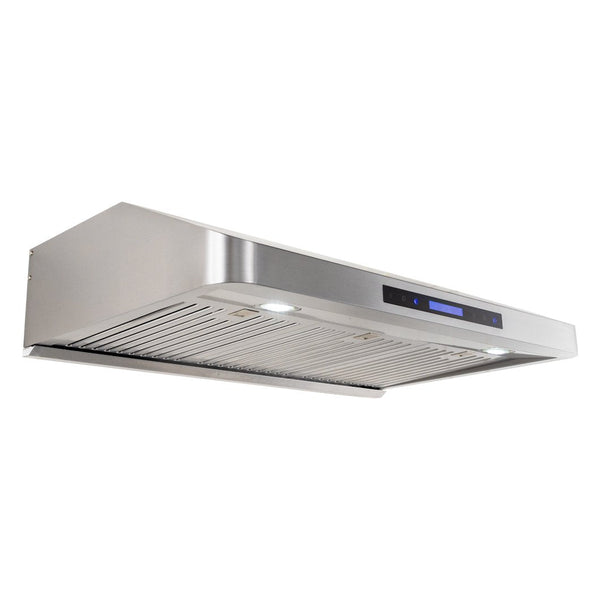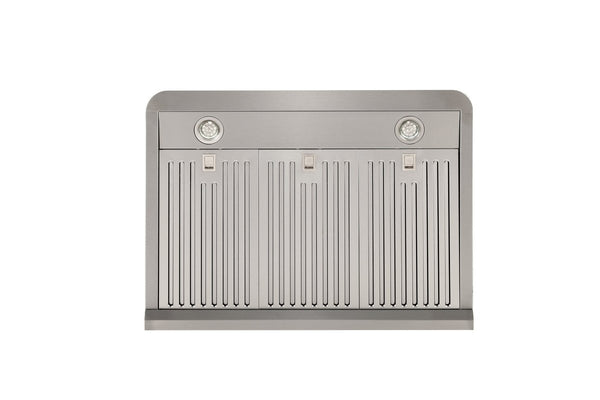Range Hood Size Calculator: Many homeowners find themselves overwhelmed by the seemingly complex world of kitchen ventilation, unsure how to match their range hood to their specific cooking environment. The key to success lies in understanding how size, installation type, and environmental factors work together to create optimal air circulation.
Range Hood Size Calculator
Determine the ideal size of your range hood based on your installation and cooktop type.
We have other articles that will help you select the right hood. Here is our Range Hood CFM Calculator, or if you want to give us a call and talk to a real person, call us during business hours at 877-901-5530.
The Indoor vs. Outdoor Ventilation Challenge
When it comes to range hood sizing, the first fundamental distinction emerges between indoor and outdoor cooking spaces. Indoor kitchens demand a precision approach that differs dramatically from the robust requirements of outdoor cooking areas. Imagine your range hood as a protective umbrella, designed to capture and whisk away cooking byproducts—but the size of that umbrella changes depending on where you're cooking.
Indoor Kitchens:
- Hood should extend 3-6 inches beyond cooktop on each side
- Example: 30-inch cooktop needs 36-inch hood
- Creates a controlled "buffer zone" to capture cooking emissions
Outdoor Kitchens:
- Require much larger hoods - typically two full sizes bigger than cooking surface
- Example: 30-inch grill needs 42-54 inch hood
- Must combat wind, temperature changes, and open-air dispersion
The difference stems from fundamental environmental dynamics. Indoor spaces offer controlled air currents and limited dispersion, while outdoor cooking battles against wind, temperature variations, and open-air circulation. A larger hood creates a more reliable containment zone, ensuring that cooking byproducts don't become unwelcome guests at your outdoor gathering.
Explore our hoods, including under-cabinet, wall-mount, island, outdoor, and range hood inserts.
Mounting Matters: Wall vs. Island Range Hoods
The mounting style of your range hood introduces another layer of complexity to the sizing equation. Wall-mounted hoods, the traditional kitchen ventilation solution, are installed directly against a wall, providing a more structured capture area. They follow a straightforward sizing principle—typically one size larger than your cooktop—and offer flexibility in ducting through walls or ceilings.
Island range hoods, by contrast, present a more intricate challenge. Suspended from the ceiling above an island cooktop, these hoods must contend with air that can approach from multiple directions. To compensate for this open-concept configuration, island range hoods require a more aggressive sizing strategy. The recommended size jumps to two full sizes larger than the cooktop, creating a more powerful ventilation zone.
The air pressure dynamics tell the real story here. Unlike wall-mounted hoods with their confined capture area, island hoods must create a strong enough draw to capture cooking byproducts approaching from all angles. It's like creating an invisible funnel that pulls cooking emissions upward and away, regardless of where they originate on the cooking surface.
Beyond Basic Sizing: The Subtle Science of Ventilation
Custom range hood design reveals even more nuanced considerations. When creating a custom hood, precision is paramount. The insert—which houses the mechanical components—should be two inches narrower than the custom enclosure. This seemingly small detail ensures proper framing and seamless integration of the hood's working parts.
Depth emerges as another critical factor often overlooked by homeowners. The vertical dimension of your range hood significantly impacts its ability to capture cooking exhaust. Deeper hoods provide more comprehensive coverage, a feature particularly crucial for island configurations. Think of it as creating a more extensive capture zone, extending the hood's ability to trap and remove cooking byproducts.
The concept of "effective capture area" represents the pinnacle of range hood engineering. This zone represents the most efficient area for managing airflow, influenced by design, blower size, and overall dimensions. Hoods with a funnel-like shape maximize this capture efficiency, creating a concentrated zone for smoke and vapor removal.
Conclusion
Selecting the right range hood size is far more than a simple measurement exercise. It's about understanding the intricate dance of air, heat, and cooking dynamics.
Your perfect kitchen ventilation solution is just a few calculations away.
Definitely check out our hoods, including under-cabinet, wall-mount, island, outdoor, and range hood inserts.
